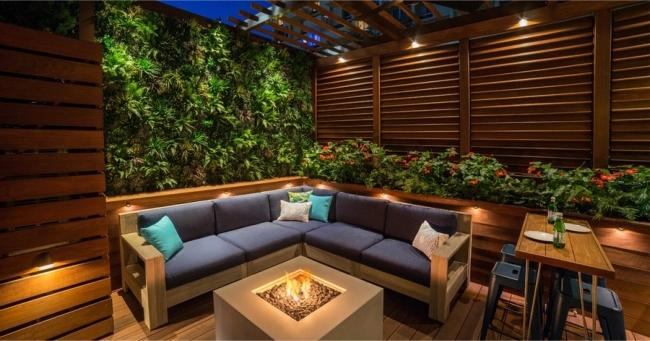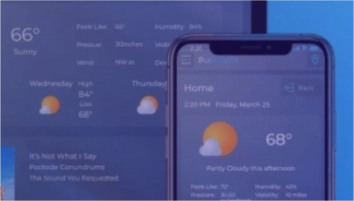Light Up Your Outdoor Spaces: The Do's & Don'ts of Lighting Design

Let Your Home Look and Feel Its Best with the Right Landscape Lighting
Once the sun sets and the stars come out, your outdoor areas can become truly magical. Imagine hosting a family barbecue under the gentle glow of warm lights or enjoying a quiet evening on the patio bathed in soft illumination. With the right outdoor lighting solutions, creating an inviting environment for gatherings, relaxation, and memorable moments becomes second nature.
In today's blog, we'll explore some landscape lighting design essentials you should keep in mind, or avoid, to enhance your space without overwhelming it. Whether you're sprucing up your existing setup or embarking on a complete redesign, these insights will help you create a cozy, functional, and visually stunning outdoor area.
SEE ALSO: The Lighting Designer's Role in Outdoor Home Integration Projects
DO: Harness the Power of Natural Light
Natural light should always be your starting point. Before reaching for artificial solutions, think about how sunlight already interacts with your space during different times of the day. Observe where the shadows fall, how the sun sets over your yard, and which areas benefit from that warm, golden-hour glow.
Strategically designing your lighting plan around these natural rhythms helps your outdoor space feel more inviting and less artificial. Once you've identified which areas of your landscape can benefit from artificial lighting and how, you can integrate them to complement—not compete with—what nature provides.
For example, warm pathway lights with photosensors that automatically adjust based on available daylight can guide your guests while showcasing the beauty of your garden and keeping your home eco-conscious, letting you enjoy a more organic and comfortable environment while being kind to the planet.
DON'T: Overuse Recessed Downlights
Recessed downlights are popular for their clean look and subtle integration into overhangs and ceilings, but too many of them can flatten your space visually and create an uncomfortable environment. A grid of downlights may evenly distribute light, but it also increases glare and removes the layered, textured feel that makes outdoor spaces cozy and aesthetically pleasing.
Instead of relying solely on overhead fixtures, combine different types of lighting, such as wall-mounted sconces, pathway lights, or even hidden uplights in your landscaping. This layered approach allows you to highlight specific features, create contrast and depth, and guide movement through the space to make darker corners more cozy and inviting, which will bring a sense of safety to your evenings while maintaining your space's peaceful allure.
DO: Allow Eyes to Adjust
When you step outside at dusk, your eyes naturally begin adjusting to lower light levels, but if your outdoor space is immediately flooded with bright artificial light, this transition is disrupted, making the environment feel jarring and causing unnecessary eye strain. This is no way to appreciate the natural beauty of your yard or garden!
To support this natural adjustment, opt for lighting systems with dimming capabilities. Smart lighting control can help you gradually brighten your space as darkness sets in, instead of flipping a switch and instantly blasting your backyard with intense brightness.
Remember, your outdoor area should feel like a natural extension of your home, not a brightly lit stage. With the right lighting design, you can cultivate a calm environment where you can fully enjoy your landscape's best features.
DON'T: Ignore Glare Reduction
Glare is the enemy of a pleasant outdoor experience. Whether it's a bright spotlight in your eyes while dining on the patio or a driveway light that washes out your entire front yard, excessive glare can make it difficult to see, and even harder to relax.
By choosing fixtures that prioritize glare reduction, and directing light where it matters, you can make your space more enjoyable for everyone. These kinds of fixtures might include downlights with shielding or louvers, low-profile path lights with soft lenses, or directional spotlights aimed away from common viewing angles. Proper placement is also key, so try to avoid aiming lights directly at seating areas, windows, or high-traffic walkways. With the right equipment and layout, you can create a visually comfortable space that's functional and doesn't make your guest squint all night long.
DO: Preserve Nighttime Darkness
Darkness has its own beauty and its own benefits. Over-illuminating your outdoor space not only detracts from the visual appeal of a night sky but can also interfere with your body's natural rhythms. Bright lights late in the evening can trick your brain into staying alert instead of winding down, affecting your ability to relax and get restful sleep.
That's why it's essential to light only the areas you're actively using. For example, soft lighting near a seating area or along a pathway is often all you need, leaving the surrounding landscape in gentle shadow.
A great option to keep your spaces safe while preserving the nighttime look is installing motion sensors for functional zones like driveways or side yards so that light is available when needed, but not always on.

DON'T: Neglect Color Temperature
Color temperature affects how your lighting feels. A warm, amber glow can be ideal for lounging areas, but higher temperatures give off a cooler, more energizing light suitable for task-oriented spaces like outdoor kitchens or garages.
The mistake many homeowners make is using one color temperature throughout or mixing them haphazardly, creating a disjointed, jarring look. However, when used with intention, varying color temperatures can add visual interest and highlight architectural or natural materials. For instance, cooler light can bring out the textures in stone walls or water features, while warmer tones flatter wooden decks and lush greenery.
The key is consistency in zones. Keep lighting within a particular area, such as a patio or garden path, to the same color temperature, and shift tone only when transitioning to a different zone or function. This will build a cohesive look that's pleasing to the eye.
Let's Illuminate Your Outdoor Oasis Together
Lighting your outdoor spaces thoughtfully not only enhances their beauty but also improves their functionality and safety. After all, improving your outdoor lighting doesn't mean making it brighter; it means making it better.
Are you ready to experience a lighting system that balances beauty and performance? Contact The Entertainer today to explore our customized solutions and let's create a stunning outdoor space that lights up your evenings all year round.


